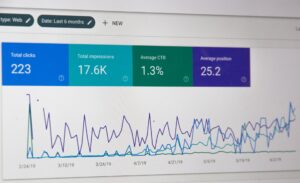**Power Play: Understanding Load Shedding**
Load shedding, a technique employed by power utilities to balance demand and supply, is simply a deliberate, list-based cutback on electricity distribution. In South Africa, this practice has become all but routine, a measure brought into play by Eskom, the nation’s primary electricity supplier, whenever it feels the system is overly strained. The reason behind this operational balancing act? A combo of aging infrastructure, lack of significant investment in alternative energy sources, and increased power demand.
**Outages by Design: The Rationale behind Load Shedding**
Intentionally plunging parts of the country into darkness might seem counterintuitive. However, load shedding Cape Town is a safety mechanism intended to prevent a total and complete blackout which could take weeks to correct. By systematically cutting power in certain regions and sectors, Eskom manages to conserve energy and reduce strain on the national grid. Alas, while this measure protects the system, it exerts pressure on the country’s households and businesses, disrupting daily routines and economic activities.
**Stages of the Game: South Africa’s Load Shedding Schedule**
Eskom’s load shedding schedule is centered around eight stages – each corresponding to a specific level of power cut, in gigawatts. Stage 1 leans towards mild load shedding, with around 1GW cut off, while stage 8 has an alarming 8GW cut. Although higher stages are infrequent, Eskom has previously escalated to stage 6 in dire circumstances, underlining the gravity of the situation and the urgent need to address the nation’s power supply challenge.
**The Domino Effect: Consequences of Load Shedding**
There’s no denying the adverse effects of consistent load shedding. It affects everyone from individual households to large industries. At its core, recurrent power cuts upend the day-to-day life of people – think refrigerated food going bad, disrupted internet service, or simple household chores added to tomorrow’s list. On a larger scale, it jeopardizes enterprises, stalls manufacturing processes, affects telecommunications, and even threatens essential services like healthcare.
**Lights towards the End of the Tunnel: Mitigating Load Shedding**
Owing to the inherent problems of load shedding, the focus on sustainable solutions has intensified. Among them, increased energy efficiency has proven beneficial, reducing the overall load on power grids. There’s also the option of supplementing power with renewable sources such as wind and solar energy, becoming less reliant on a single, centralised utility provider. On a high-tech note, South Africa is exploring the use of smart grids and smart meters – advanced tech to streamline and democratize the power supply.
In sum, load shedding is a complex issue, a manifestation of broad challenges facing South Africa’s power sector. However, by understanding its rationale, stages, and consequence, it becomes clear that long-term solutions need to be found. Armed with this understanding, South Africans are better equipped to adapt, push for systemic reforms and explore innovative, sustainable power solutions.




















